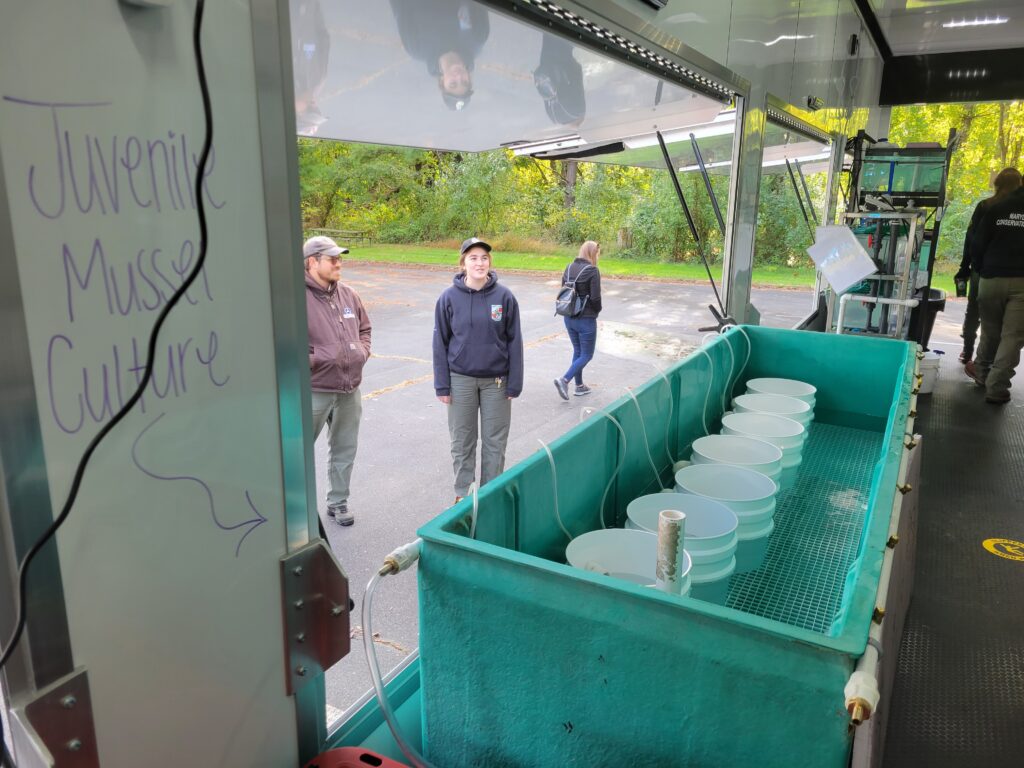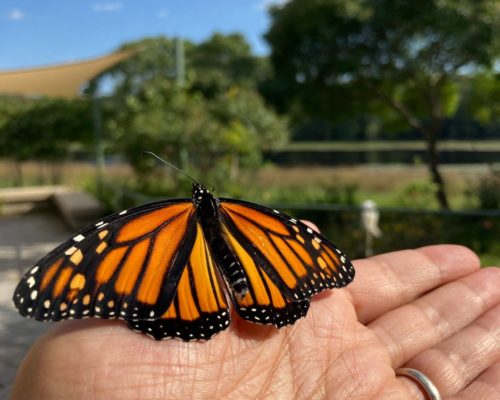The Maryland Department of Natural Resources (DNR) is bringing some conservation muscle, er, mussels to the Upper Bay beginning this week with a one-of-a-kind new program.
Just in time for DNR’s first ever Science Week (Oct. 16-22), the department’s new Mobile Mussel Hatchery debuted at Susquehanna State Park in Havre de Grace. This new project is novel in that it operates as a fully functional hatchery of freshwater mussels. DNR says it’s not the first trailer to exist for mussel research, but none is this large and no other houses all steps of raising fish and mussel broodstock for propagation efforts.
The Mobile Mussel Hatchery was built this year and began operating in the past few days, according to Joe Zimmerman, DNR science writer. The trailer itself that’s being used is a racecar hauler by design. It will be at Susquehanna State Park for October and November and then parked offsite for the winter. In the spring, it will return to the park. It is “a prime location,” explains Zimmerman, “because it is accessible to the Susquehanna River.”
As an added bonus, the hatchery’s location in the park makes it a great opportunity for public outreach and education about mussels. It’s open for tours.
Why is raising mussels such an important pursuit in Bay tributaries? They’re one of the species most at risk locally and on the continent. Of the 16 species of freshwater mussels native to Maryland, 14 are “facing imperilment”, Zimmerman says. That includes six threatened or endangered species in the state and two that are federally listed. As filter feeders, mussels are especially susceptible to pollution. And they rely on healthy fish species in the area, too.
Baby mussels, known as glochidia, need to attach to a fish host to complete their life cycle, according to the Chesapeake Bay Program. Symbiotic fish species are also present in tanks in the Mobile Mussel Hatchery.
First, researchers collect mussels from the Susquehanna and put them in tanks in the trailer. They collect larvae from the mussels and implant them into the gills of fish stocked near the back of the trailer, fish that were raised in aquaculture labs by students across the county at North Harford High School. The mussel larvae live off the nutrients from fish (without harming the fish—they’re more like hitchhikers). After two weeks, the larvae fall off the fish, known as “transforming”. Scientists collect them in nets, monitor their growth, and eventually introduce them back into the river.
This fall and spring, the mobile hatchery’s operation is considered a trial run. Natural Resources biologist Matt Ashton says they hope to transform 100,000 mussels in the spring.
The mobile hatchery is not the only thing DNR is showing off for Science Week. The department’s scientists, staff and partners will be highlighted for their varied fields of work, from tick prevention to coastal flooding impact.
-Meg Walburn Viviano




